Some choices in life are easy. Got a cookout to plan? You could grill up an assortment of brats or slap some plant-based science experiment on the grate — or you could do what everyone else does and flip a few burgers. Simple, easy, and everyone loves ’em. The Glock 19 is the hamburger of the pistol world. Pretty much everybody loves them, and they always hit the spot.
To the casual observer, the Glock 19 is just a Glock 17 Lite — with reduced dimensions and a smaller magazine capacity. But the performance gap is much smaller than the size differential, and the result is a pistol that’s big enough to see combat on behalf of Uncle Sam and small enough to ride inside the civilian waistband as Glock’s first pistol considered ideal for concealed carry. It’s a shape-shifter that pistol shooters simply cannot get enough of.
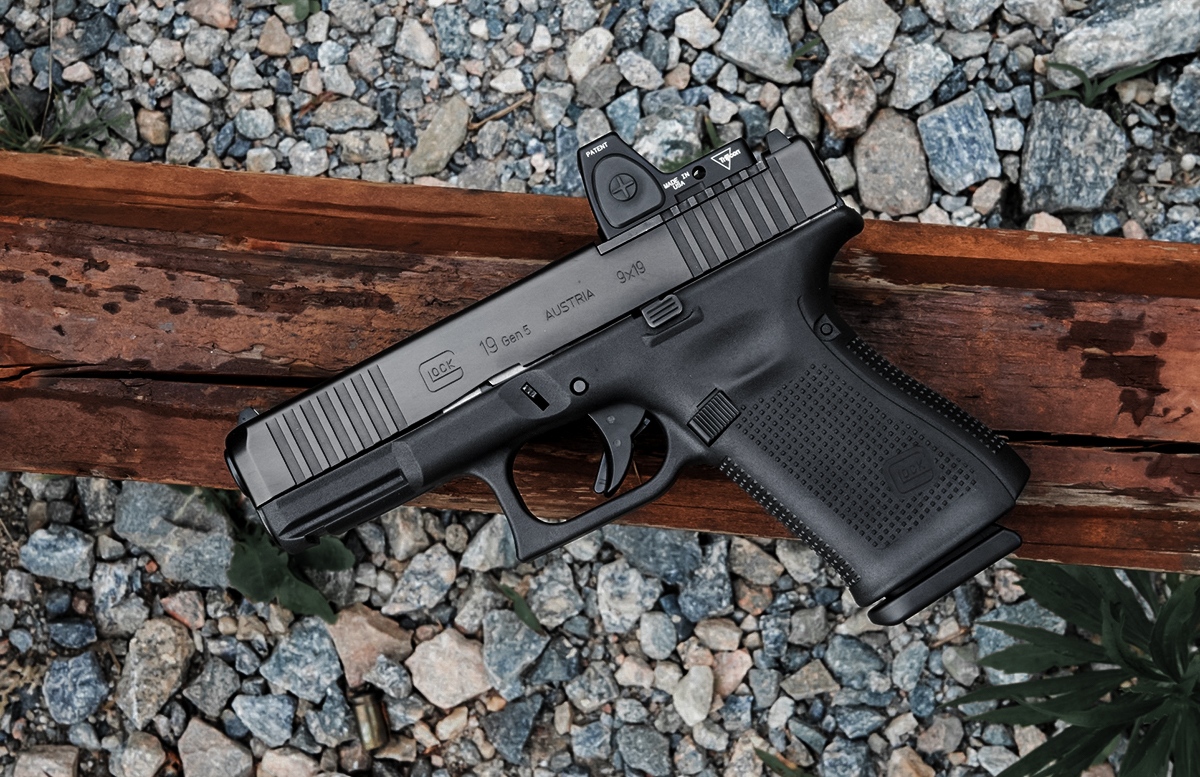
Origin and History
Glock unleashed the Glock 19 on the world in 1988. Polymer pistol frames were uncommon back then, but the company already had the full-size (standard, in Glock lingo) Glock 17 in all its polymer glory as a proof of concept, so that’s what the pistol got, too. To make the handgun more compact, Glock reduced the capacity to 15 rounds in a standard magazine (although Glock extended magazines fit) and trimmed the barrel length to 4 inches.
Striker-fired pistols were nothing new in the 1980s, but Glock played a major role in mainstreaming them, first with the Glock 17 and the Glock 19. Most pistols in production at the time used either single-action triggers (like the 1911) or double-action/single-action triggers (like the Beretta 92).

With only 34 components, reliability was partly a numbers game — fewer parts means fewer potential points of failure. Clever design and quality materials combined to make the Glock 19 famously reliable.
The Glock 19 saw its share of challenges, roadblocks, and booming sales between then and now. There was a bizarre time period when the police helped the pistol circumvent the Assault Weapons Ban of 1994. Years later, SOCOM had to pull a fast one on the Pentagon to get operators’ hands on the Glock 19 — all the while, the little-pistol-that-could kept growing in popularity.
RELATED – FNX 45 Tactical: A Gift From the Joint Combat Pistol Competition
Good Bones
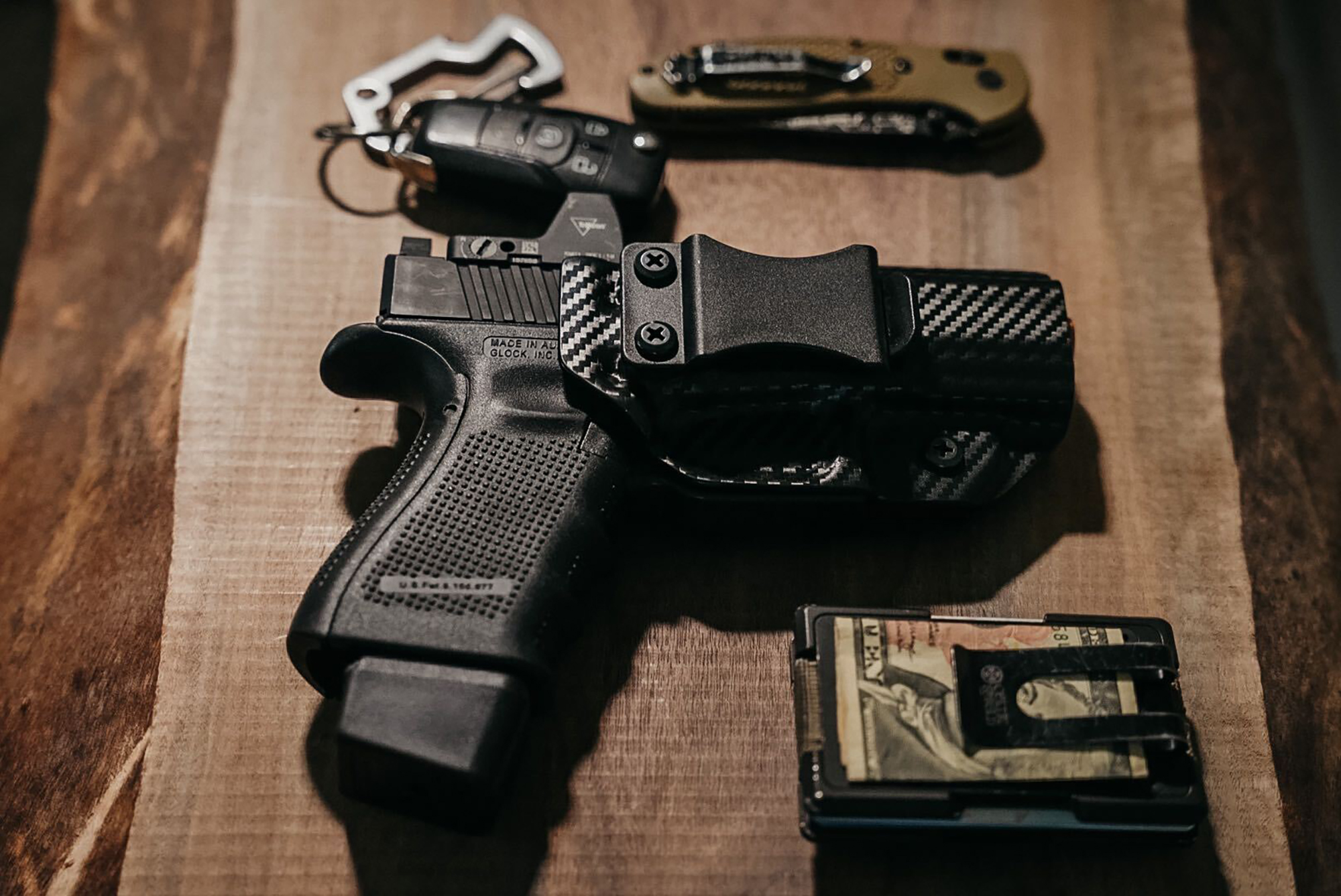
The Glock 19 has evolved through the years, but the underlying structure was so damn good that it became the industry standard. No matter which generation you look at, every Glock 19 follows the same basic recipe:
- Compact polymer frame, compact steel slide
- Chambered for 9mm Luger
- Striker-fire mechanism
- 4-inch barrel
- 15-round standard magazines
- Safe Action System
Glock 19 Gen 1
If you’re having a hard time digging up information on the Glock 19 Gen 1, there’s a good reason for that. Glock generations are defined by specific features and production years; they’re not model-specific. By the time the Glock 19 debuted, Glock had transitioned to Gen 2 pistols.
Legend has it that there are a handful of super early Glock 19s floating around that might fall in that Gen 1 category, but most of the time, they’re just Gen 2 pistols.
RELATED – Smith & Wesson Releases M&P 5.7 Handgun in Flat Dark Earth
Glock 19 Gen 2 (1988–1997)
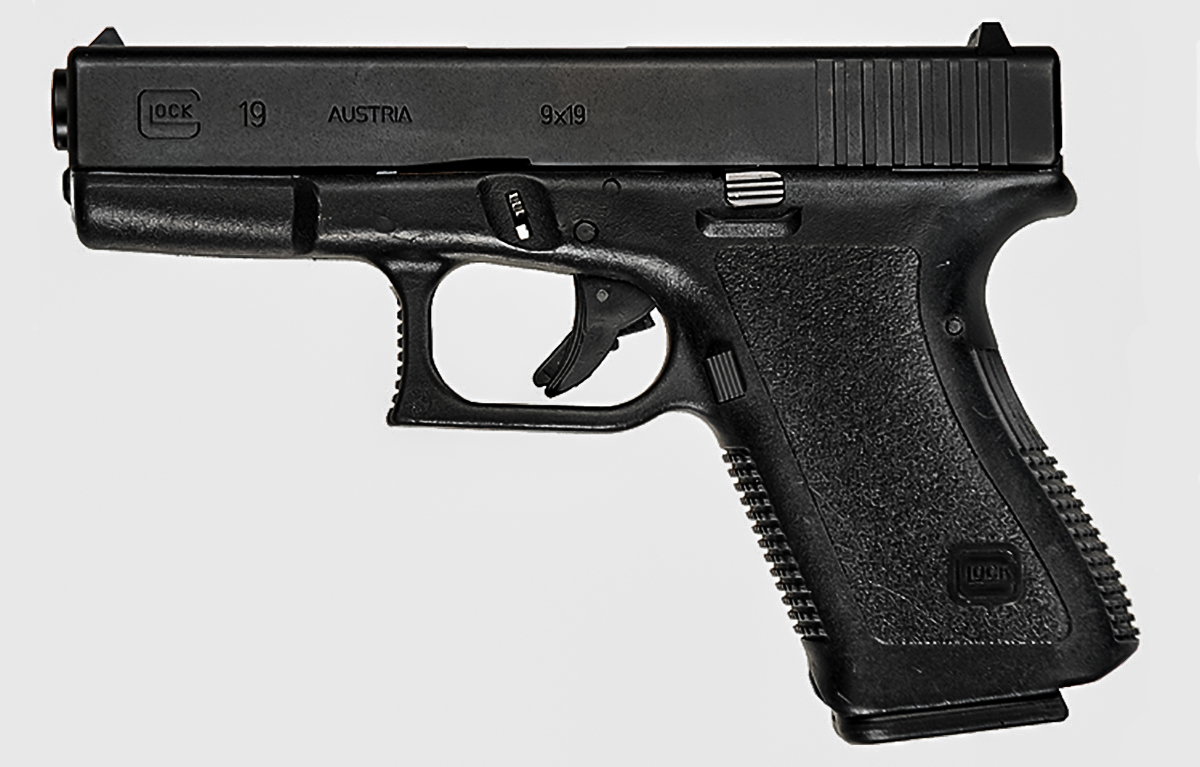
The first batch of production Glock 19 pistols came in the form of the Glock 19 Gen 2 starting in 1988. At a glance, you can tell a Gen 2 pistol by the grip, which has checkering on the front and back and a texture that looks like skateboard tape on each side. Slides from this era got a black Parkerized finish.
The most important new feature of Gen 2 Glocks was a steel insert into the frame that bore each gun’s serial number. This adaptation made the polymer frame more legitimate in the eyes of the ATF and paved the way for future polymer-framed pistols.
To improve feeding, Gen 2 Glock magazines got stiffer springs and a metal lining. You might find some Glock 19 Gen 2 pistols kicking around with plastic Glock 17 magazines. These are notorious for sticking in the magazine well. It was intentional — Glock didn’t want magazines getting lost during reloads — but the design was short-lived for good reason.
Glock also combined the recoil spring and guide rod into one assembly for second-generation pistols.
The Glock 19 Gen 2 was cutting-edge in 1988, but it’s a bare-bones pistol by today’s standards. The polymer sights are rudimentary, and the controls are only set up for right-handed operation.
RELATED – Glock 26: Pocket-Sized Perfection for Three Decades
Glock 19 Gen 3 (1998–2009)
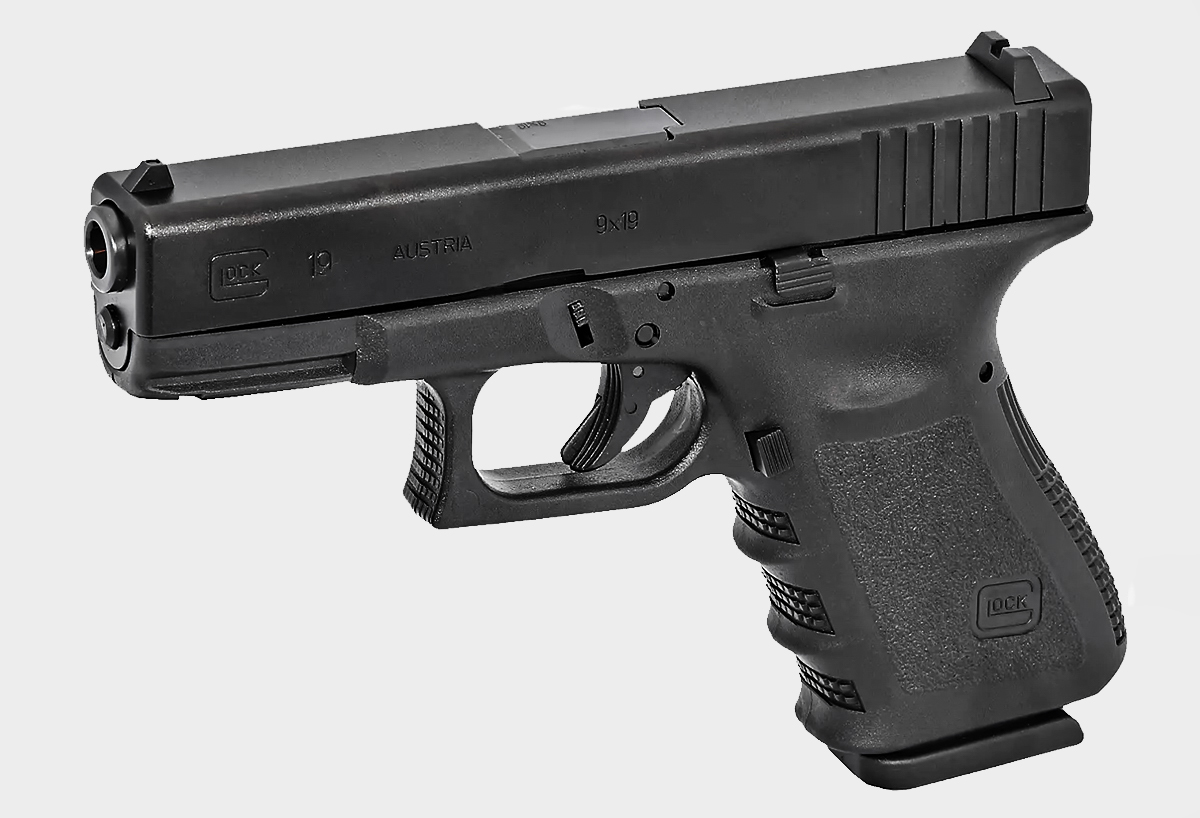
Glock released the Glock 19 Gen 3 in 1998. To spot one, look for finger grooves, a thumb rest, and a grenade or waffle-iron texture on the grip. This was the first year Glock built an accessory rail onto the frame so owners could add a weapon light.
If you look at the side of the frame just above the trigger, you’ll notice a second pin for the locking block. Glock redesigned the Gen 3 extractor to serve as a loaded chamber indicator. This clever design gave shooters visual and tactile confirmation that a round was in the chamber.
The Glock 19 Gen 3 is not particularly special in the grand scheme of things, but it’s a huge deal in California. Because the Glock 19 Gen 3 went on sale in 1998, it was the last model Glock released before California’s 2001 handgun roster that identifies which guns are legal in the state. Since firearms are sometimes removed from the list but never added (funny how that works), buying a 10-round Glock 19 Gen 3 is as good as it gets for residents of the Golden State unless that law gets overturned.
RELATED – Glock 17: Respect the OG Wonder-Nine
Glock 19 Gen 4 (2010–2016)
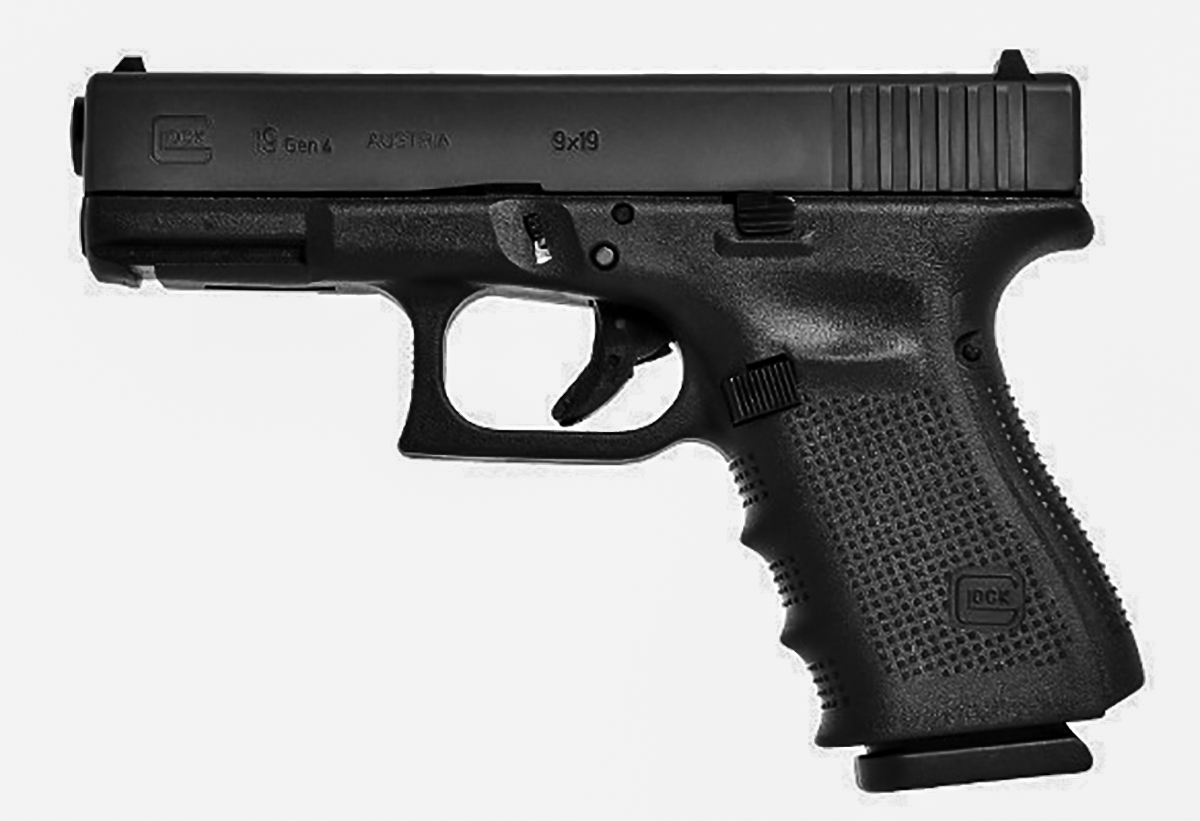
In 2010, after 12 years of the Glock 19 Gen 3, the Glock 19 Gen 4 finally came along. This is where older pistols start to feel modern, and you can score a good deal on a used model, including police trade-ins.
Interchangeable backstraps enable owners to find a more natural fit, and a larger magazine release allows shooters to operate mag changes more efficiently.
Initial tests of the Glock 19 Gen 4 praised its significantly reduced recoil. That’s due to a dual recoil spring setup that replaced the conventional spring-over-guide-rod assembly from Glock’s previous generations.
Gen 4 was also the first generation of the Glock 19 to feature Glock’s Modular Optic System. By opting for a MOS-spec pistol, shooters could mount a red-dot optic. Various adapter plates allow the system to work with optics using multiple mounting patterns, and you can install them at home with basic hand tools.
Glock’s website lists the Glock 19 Gen 4 as a “law enforcement only” model. That doesn’t mean you can’t buy one. It just means Glock is offering limited support to this legacy model to serve law enforcement agencies that still use it. Most of the company’s focus is on delivering Gen 5 pistols and parts.
RELATED – The 9mm Pistol: Dominating 120 Years of War and Peace
Glock 19 Gen 5
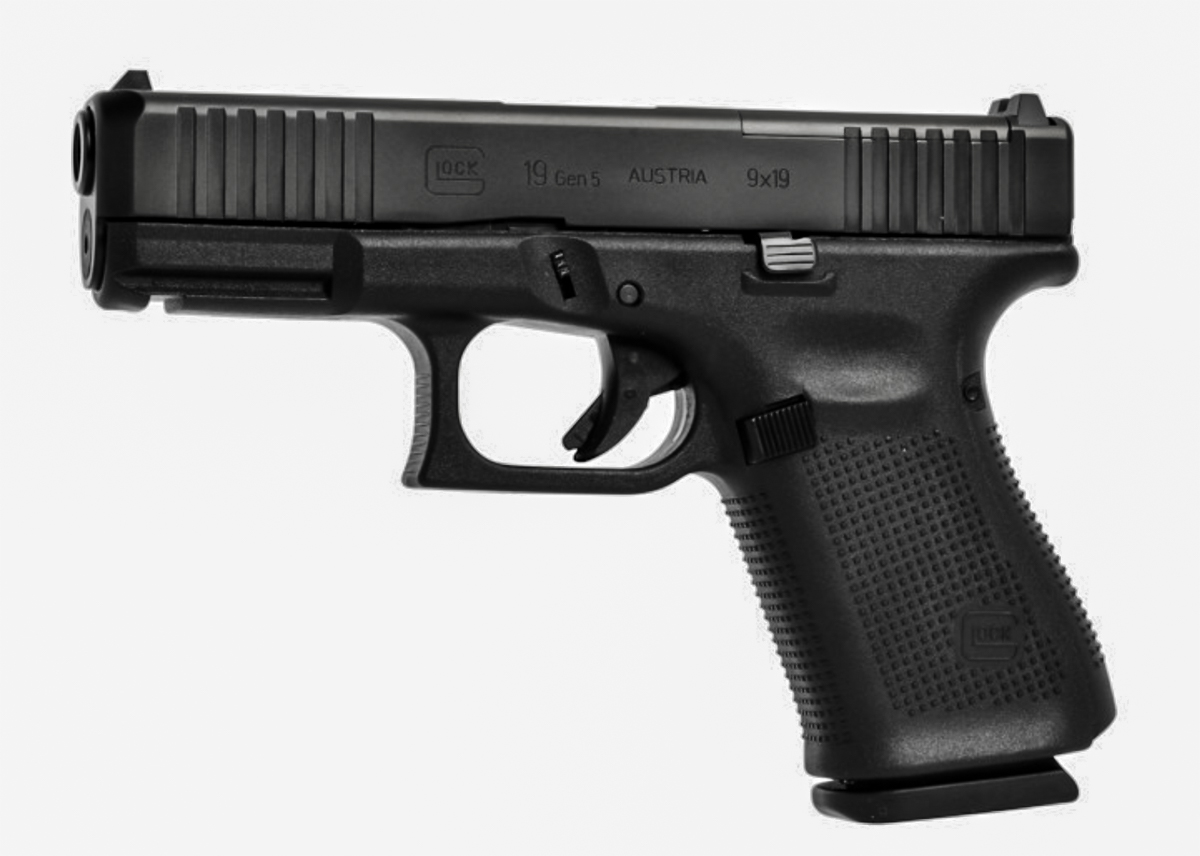
The current Glock 19 Gen 5 has been available since 2017, and it feels like a greatest hits album of Glock generations.
Glock ditched finger grooves for a grip that feels like it came straight off a Glock 19 Gen 2. The slightly thicker (and stronger) frame also gets a single locking block pin like the Gen 2, although the reinforced design is stronger than the dual-pin design from the Gen 4. The magazine well is flared just enough to speed up reloads without compromising the pistol’s concealability.
The slide is beveled at the front and features front serrations for press checks (and probably looking cool since there’s still a loaded chamber indicator). A Nitride Diamond-like Coating (nDLC) on the slide promises better wear protection, and the slide stop is now ambidextrous.
For Gen 5 pistols, Glock is abandoning polygonal rifling in favor of button rifling with the Glock Marksman Barrel. This is a big departure for the company, and you can expect marginally increased accuracy as a result. The trigger feel is also improved — it’s still no Staccato trigger, but we’ll take what we can get (and probably upgrade as soon as we get the chance).
If you buy a Glock 19 Gen 5 MOS, you won’t just have a solid CCW and home defense gun — you’ll also get to hold a legend in your hands. This workhorse is cut out to serve on your duty belt, CCW holster, or nightstand.
GOOD GEAR – Launch Your Mornings Into Orbit With the BRCC Space Bear Roast
What About the Glock 19X?
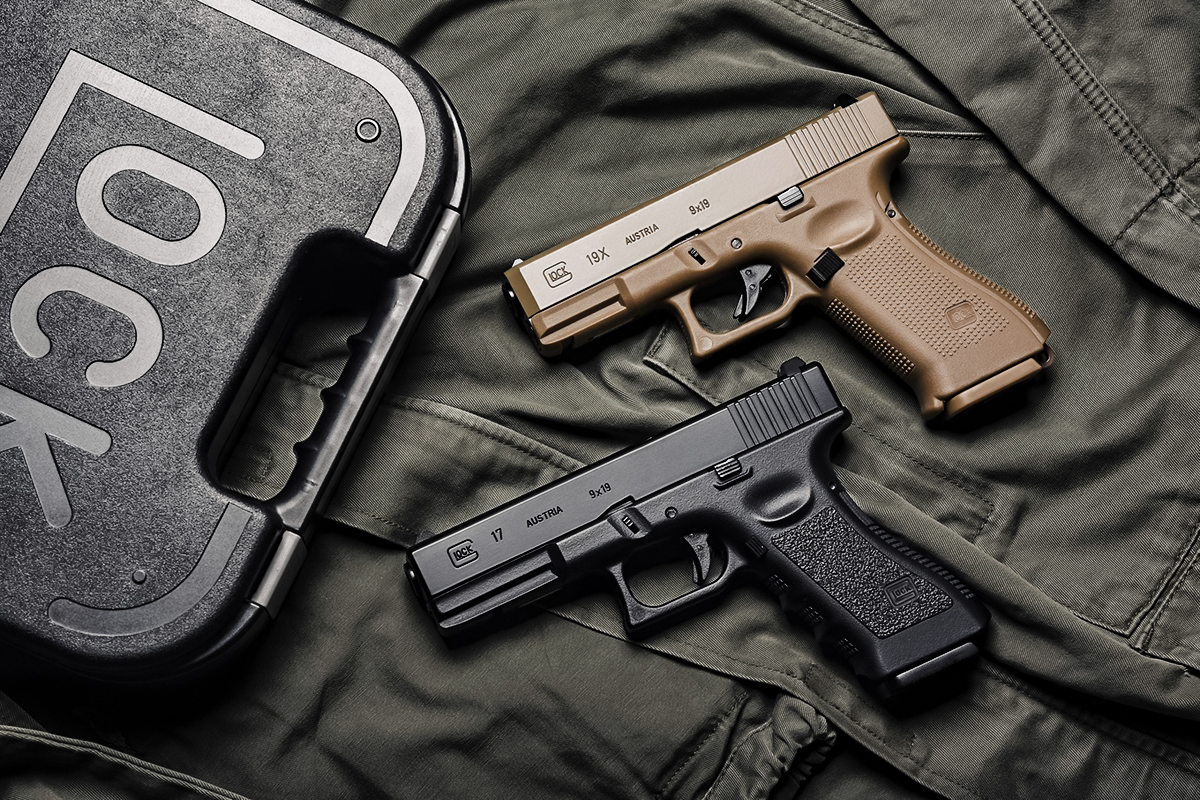
Glock released the Glock 19X with a sharp-looking FDE finish in 2018, which should have made it a Gen 5 pistol. While it does get meaningful Gen 5 upgrades, like the Glock Marksman Barrel and ambidextrous slide stop levers, it’s not exactly a Gen 5 model.
Slide assemblies are interchangeable between the Glock 19X and Glock 19 Gen 5. What sets it apart is a full-size frame built to accommodate 17-round magazines. However, the magazine well has a different shape, so it can run Glock 19X magazines or Gen 4 magazines but not Gen 5 magazines.
One of the biggest dings against the Glock 19X is the lack of a MOS model. Combining full-size capacity with a CCW-friendly slide is great, but it would be better if you could mount a red dot on top. Technically you can, but that’s called a Glock 45 MOS. Go figure.
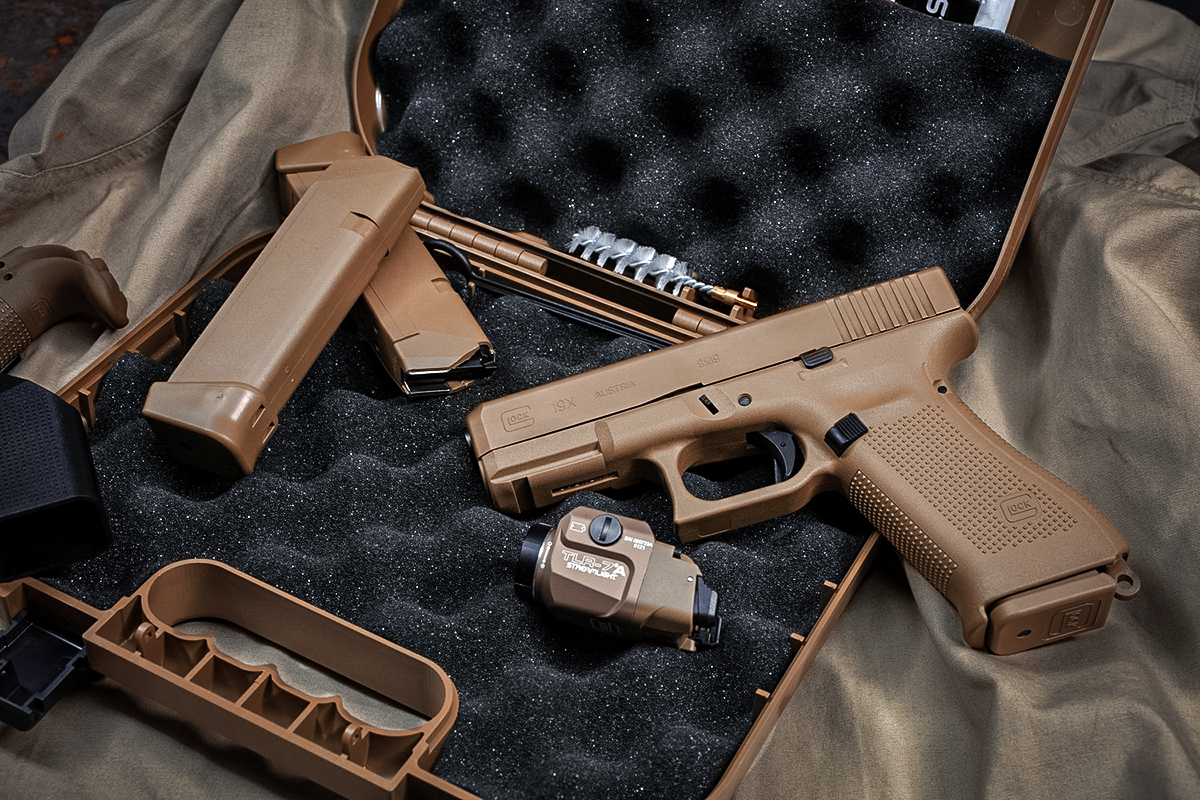
The Glock 19X also has a weird lanyard loop because Glock originally pitched this pistol to the U.S. military, and apparently, lanyard loops win wars.
Glock 19 Gen 6?
Since we’re several years into the Gen 5 production run, some Glock fans are curious about when the Glock 19 Gen 6 will appear and what it’ll look like. Will finger grooves make a comeback? Will the platform become more modular, like the Glock 47 MOS and SIG Sauer P320? Only time will tell.
If you have a wishlist for the Glock 19 Gen 6, go ahead and make your voice heard. Maybe if you translate it into Austrian, your dreams will come true.
READ NEXT – Get the Best Concealed Carry Gun That Works for You



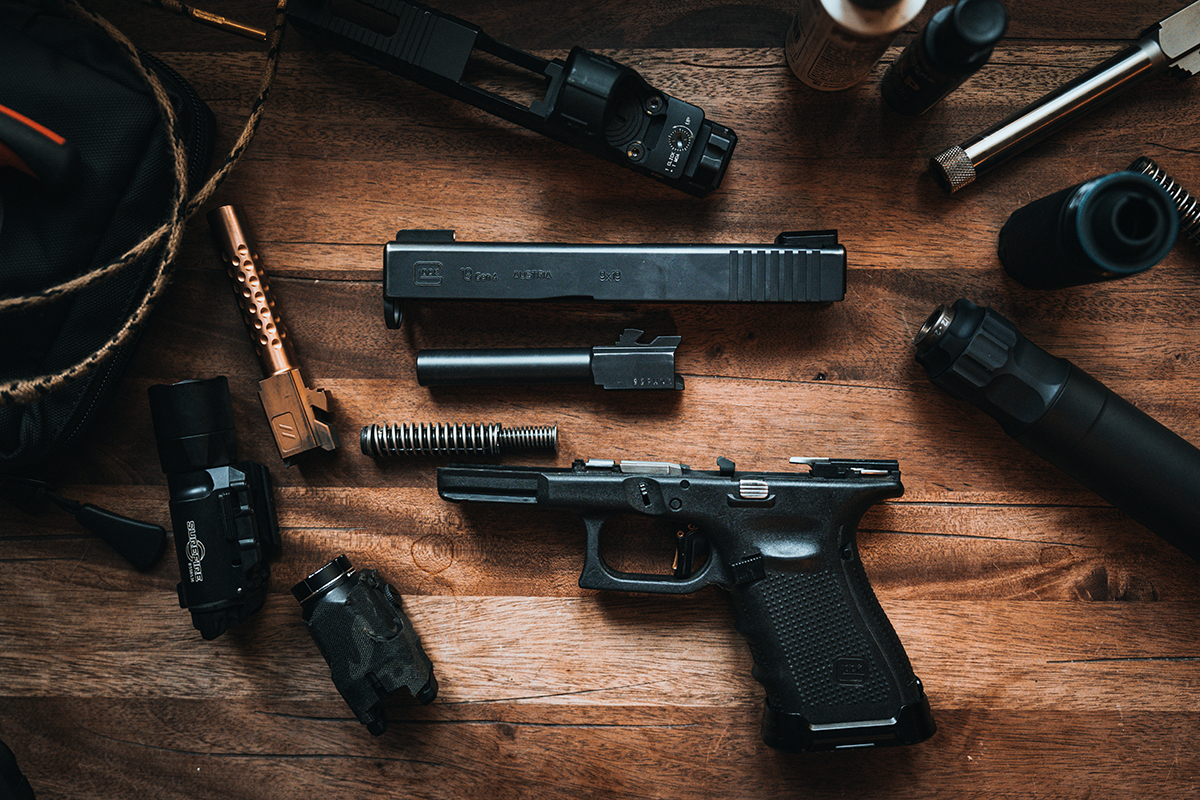


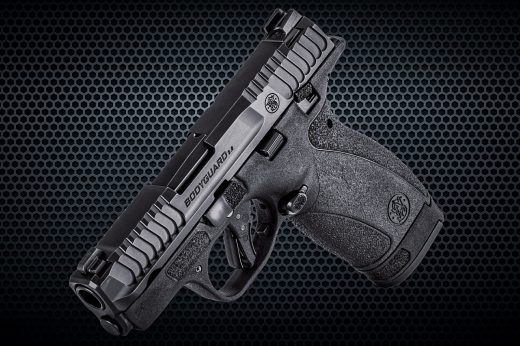
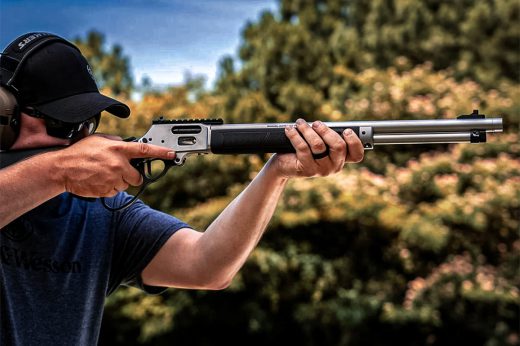


Comments